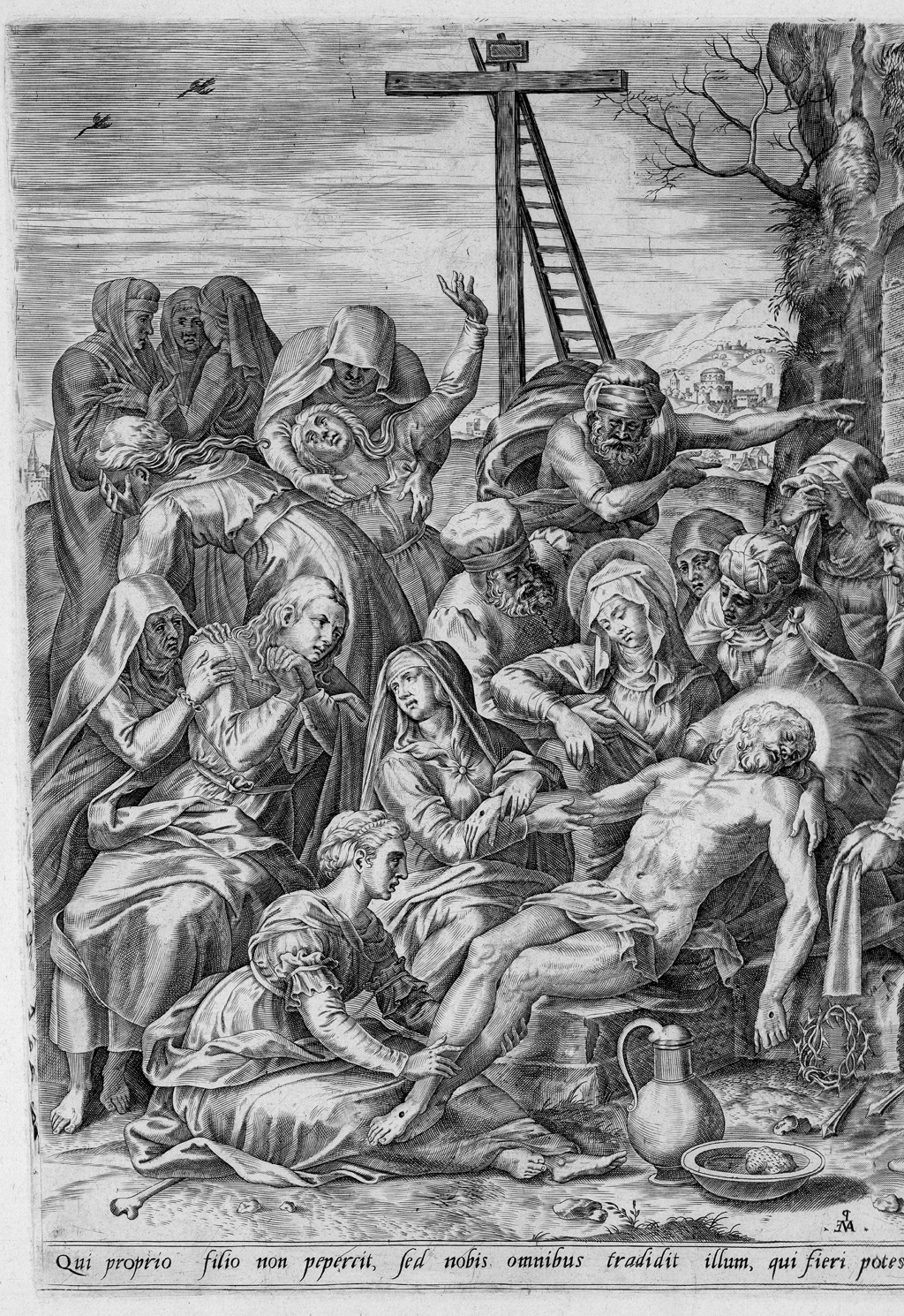Loading the page ...
Pieter van der Heyden
(Petrus a Merica, c. 1530 – c. 1572, Antwerp)
The Mourning of Christ. Engraving. 35.8 x 37 cm. Nagler, Die Monogrammisten II, 1689; Hollstein 12. Watermark: Post horn in shield.
The engraver Pieter van der Heyden was one of the most industrious reproductive engravers to work for the Antwerp publisher Hieronymus Cock. He joined the Antwerp Guild in 1557 and worked for Cock and his widow Volcxken Diericx between 1551 and 1572. The artist also called himself "Petrus a Merica", and the monogram he used, composed of the capital letters PAME, is derived from the latinized form of his name. Van der Heyden was a classical reproductive engraver who remained faithful to his models, although he was the artistic inferior of such colleagues as Cornelis Cort and Philips Galle. Among his best efforts are the numerous engravings after Hieronymus Bosch and Pieter Bruegel, which made an important contribution to the burgeoning fortunes of Cock’s publishing house Aux Quatre Vents.
The present, very rare sheet probably dates from the early 1550s, when the activities of the publishing house, founded in 1550, were just getting under way. In his early years Cock was the first Dutch publisher to specialize in reproductive engravings after such Italian masters as Michelangelo, Raphael, Giulio Romano and Andrea del Sarto. At this time he employed the famous Mantuan engraver, Giorgio Ghisi, who produced five large-format engravings for the publisher between 1550 and 1555. Cock thus did a great deal to spread the formal vocabulary of the Italian Renaissance in Flanders.
According to Nagler The Mourning of Christ is based on a model by an unknown Italian Mannerist. It seems, however, more probable that a Flemish Romanist like for instance Michael Coxcie could have been the inventor of the design. Van der Heyden’s engraving is striking for its large format and the compositional density of the multi-figured scene. His engraving style is somewhat wooden, and there can be no doubt that he lacks the panache of his Italian or Flemish model. Nevertheless the print is impressive for the simplicity and seriousness of the formal vocabulary, which is appropriate to the solemn theme. Reproductive engravings like this one will certainly have had their impact on contemporaries, thus contributing to the growing fame of Cock’s publishing house.
A very fine, strong and early impression, printed on the full sheet, with numerous needle scratches along the platemark. In impeccable condition.
